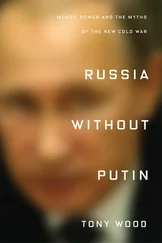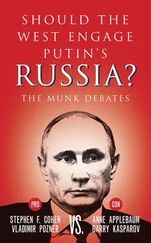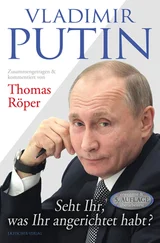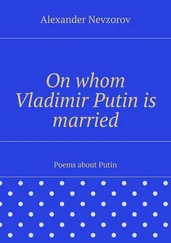A Russia Without Icons
The Russians were iconoclasts even before they had icons.
In 988 Grand Prince Vladimir of Kiev, “a fundamentally good man who led a life of lechery and murder,” [201] Vladimir Volkoff, Vladimir the Russian Viking (Woodstock, N.Y.: Overlook Press, 1985), p. 223.
had a spiritual awakening and decided to convert his people from paganism to one of the three great religions in that part of the world. According to the ancient Chronicles, a mixture of legend and history, Vladimir dispatched envoys to see what those religions had to offer. The loss of Israel did not make Judaism seem a fortunate enterprise. Islam’s prohibition on alcohol made it out of the question, for, as Vladimir himself remarked in a two-line poem:
The Russian cannot bear to think
Of a life devoid of all strong drink. [202] Richard Lourie, Predicting Russia’s Future , p. 10. My translation.
However, his envoys reported from Constantinople that the beauty of the cathedrals was such that “we knew not whether we were in heaven or on earth.” [203] Volkoff, Vladimir the Russian Viking , p. 176.
So, beauty won the day. Or at least beauty coupled with realpolitik, for it made more economic and military sense for Vladimir’s domain, Kievan Rus as it came to be called, to ally itself with Byzantium, the great power in those parts.
But before Christianity with all its beliefs, rituals, and icons could be fully implemented, the old paganism had to be done away with. In that belief system life was a struggle between the Dark God and the Bright God, but there were many lesser deities as well, chief among them Perun, god of thunder and lightning. Grand Prince Vladimir “directed that the idols be overthrown and that some should be cut to pieces and others burned with fire. He thus ordered that Perun should be bound to a horse’s tail and dragged … to the river. He appointed twelve men to beat the idols with sticks.” [204] Lourie, Predicting Russia’s Future , p. 9.
In all this can be observed several tendencies that would persist through the centuries: Change comes from the top down. Ideology tends to be imported. Not only must new sacred images be introduced, but the old ones must first be desecrated and destroyed.
The tenacious persistence of cultural forms in Russia is at times nothing short of amazing, as James Billington observed in his classic The Icon and the Axe : “Just as the iconostasis of a cathedral was generally built over the grave of a local saint and specially reverenced with processions on a religious festival, so these new Soviet saints appeared in ritual form over the mausoleum of the mummified Lenin on the feast days of Bolshevism to review endless processions through Red Square.” [205] James Billington, The Icon and the Axe (New York: Vintage Books, 1970), pp. 36–37.
And in 1917 Vladimir Lenin showed himself little different from Grand Prince Vladimir of Kiev when it came to a passion for iconoclasm. Lenin, who actively hated the very idea of God, persecuted both the symbols of Christianity and its priests, who were imprisoned and executed in large numbers. In his book Soviet Civilization Andrei Sinyavsky describes “the Bolsheviks’ extravagant acts against sacred objects, as when they did not just remove the icons from a church but used them to make floors for the village baths without even sanding off the saints’ faces. Or when they lined them up against a wall and shot at them, as if, for these atheist resisters of God, the icons were living beings.” [206] Andrei Sinyavsky, Soviet Civilization (New York: Arcade, 1988), p. 11.
In 1931 Stalin ordered the demolition of Moscow’s Christ the Savior Cathedral, built in the mid-1800s to commemorate the victory over Napoleon. It was to have been replaced by a Palace of Soviets, much larger than the Empire State Building and topped with a 260-foot statue of Lenin. However, after the demolition of the cathedral, the ground proved too marshy to support such a grandiose edifice, and for years the gaping hole was left empty. Later, Khrushchev hit on the idea of turning it into the world’s largest outdoor swimming pool, which fit nicely into the totalitarian cult of mass sport, if not rising to the iconic heights of the original concept. It was only after the fall of the USSR that the Christ the Savior Cathedral was rebuilt from scratch at enormous expense by Moscow mayor Yuri Luzhkov. And so it was into that long-suffering, much-manipulated, and symbol-drenched cathedral that one day in 2012 three young women, their faces concealed with balaclavas, began singing a discordant song of protest against Putin, a punk prayer. They were immediately arrested and almost as immediately became famous as members of Pussy Riot. Though they were quite sincere in protesting the suspect coziness of church and state, they had also inadvertently entered a labyrinth of symbols that led, as do so many things in Russia, to prison.
A desacralization and desecration of images had also occurred when the Soviet regime began falling in the late 1980s. Statues of Lenin—though not all of them—were torn down, and of course he himself, so to speak, remains in his mausoleum on Red Square. Immediately to the left of Lenin’s tomb is Stalin’s grave and the bust with its oddly crafty eyes. Stalin too had been embalmed and entombed alongside Lenin in the mausoleum until 1961, when Khrushchev, as part of his anti-Stalin campaign, ordered the body removed under cover of night, then buried. Stalin’s body was then placed under a concrete slab, just to be on the safe side. Who knows, maybe the corpse had even been dragged by a horse and beaten with sticks.
* * *
The collapses of Tsarist Russia in 1917 and of Soviet Russia in 1991 were greatly different. Though Lenin was caught by surprise by events, having despaired of seeing any revolution in his lifetime, he and the other far-left revolutionaries had one enormous advantage: they knew what they wanted to be rid of and what they wanted to replace it with. The Bolsheviks had a worldview, a theory of politics, government, economics, foreign policy; they had a flag and a color—red, the color of flame, blood, and revolution; they had songs that could move the masses, they had artists itching to use the instruments of modernism to create a new art for all of society and not just one for an elite of connoisseurs. They had a philosophy of life and a theory of history as a progressive dynamic evolving through contradiction toward social justice for all. The state would gradually wither away as people achieved ever higher levels of consciousness, a vision described by Leon Trotsky in the concluding words of his book Literature and Revolution :
Man will become immeasurably stronger, wiser and subtler; his body will become more harmonized, his movements more rhythmic, his voice more musical. The forms of life will become dynamically dramatic. The average human type will rise to the heights of an Aristotle, a Goethe, or a Marx. And above this ridge new peaks will rise. [207] Leon Trotsky, Literature and Revolution , Last lines, Leon Trotsky Internet Archive.
In 1991 there was no Lenin waiting in the wings. Instead of the drama of violent armed clashes, there was only a void that only grew the more it was fed.
The questions about this period are myriad: Did the United States do too little to help in the critical early nineties? Or, on the contrary, did the United States interfere too much and propose solutions that were ill-suited for the reality of Russia? Or was there in fact very little that any outside nation could do, since Russia’s resurgence, like its demise, would largely be a matter of its own making?
Читать дальше
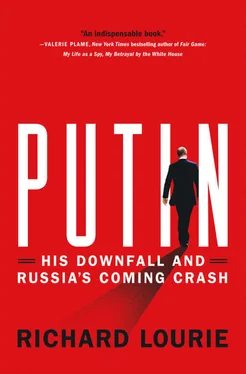

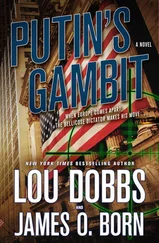
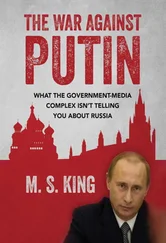

![Stephan Orth - Behind Putin's Curtain - Friendships and Misadventures Inside Russia [aka Couchsurfing in Russia]](/books/415210/stephan-orth-behind-putin-s-curtain-friendships-a-thumb.webp)
